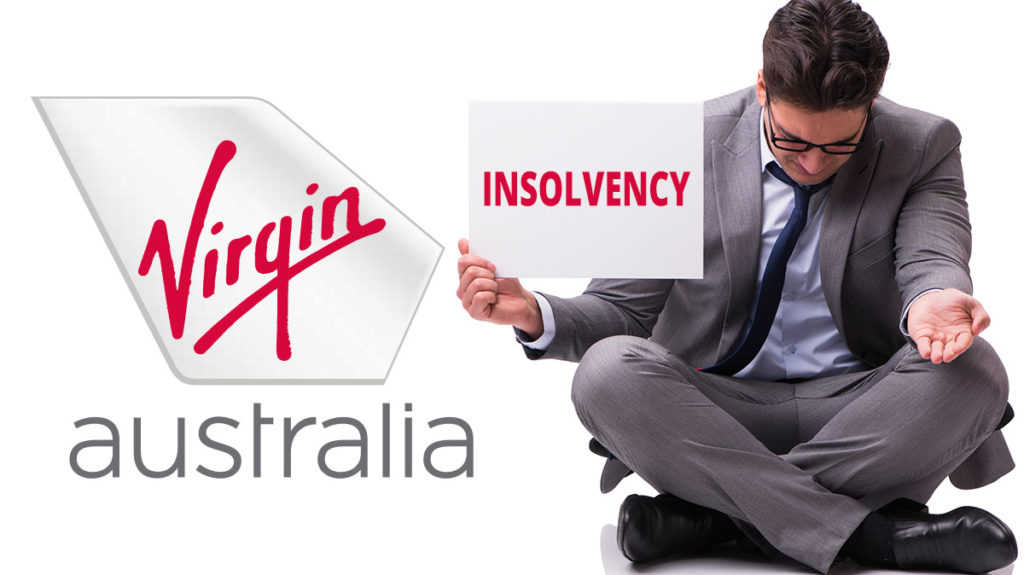Virgin Australia has been poorly managed and poorly capitalised for years. Whilst the Coronavirus lock-down is the most recent cause of its woes it is merely the latest in a long list of excuses. Qantas had its turn with the begging bowl in early 2014, I wrote then that the Australian Government should deny it a bailout as it wasn’t necessary. A bailout would have gotten in the way of Qantas fixing its problems, which it ultimately did without government help. The situation is somewhat different for Virgin, it is most likely to go into administration without a bailout. However, insolvency is the best pathway for Virgin as it is the best opportunity to fix the longstanding problems.
The Problems with Virgin
Virgin’s structural problems are the result of years of mismanagement. It is trapped between being much more expensive than Jetstar and with a lesser offering than Qantas, although routinely being almost as expensive as Qantas. As a result, Virgin has consistently struggled to attract the high paying customers and load factors that would take it from being a loss maker to a strong competitor.
Virgin’s ongoing financial problems are no secret. After an IPO at $2.25 in 2003, its shares have rarely traded above $0.50 in the last decade. The company has pursued growth over profits adding marginal routes that weighed down the good business it had servicing the capital city routes. This failed strategy has left the airline overloaded with aircraft. The sale and subsequent repurchase of part of the frequent flyer business has left it loaded with debt, with most of the fleet and the frequent flyer business locked up by secured creditors.
The Alternatives to Insolvency
Virgin is now pursuing a dual pathway to attempt to remain solvent, searching for fresh equity whilst at the same time negotiating with lenders for a debt restructuring. Whilst either of these, or both in combination would give the business more time, both are likely to be fruitless endeavours. Virgin needs to go through a deep restructuring of its entire business including;
- Handing back/selling off aircraft it will not need in the medium term
- Making redundant staff it cannot put to work in the medium term
- Negotiating with suppliers for cheaper goods and services
- Reducing office space and corporate overheads
All of this needs to be done at the same time as the business is burning through cash, estimated to be at a rate of $5-7 million per day. Without most of the fleet being back in the air and carry near capacity loads, a situation extremely unlikely in 2020, Virgin will simply run out of cash. Even if all the unsecured debt was converted to equity it would make little difference to the cost base. The only feasible option to right size the business is voluntary administration.
The Earlier the Better for Insolvency
Given Virgin has limited cash left and is rapidly burning through it, an insolvency in a matter of weeks offers the best prospects of preserving a broad business. The less cash that is left when insolvency begins, the more likely it is that Virgin will follow in the footsteps of Ansett and be sold off for scrap. With a decent starting cash balance and in the current economic environment administrators would have a strong hand to:
- Cut a new deal on the greatly reduced number of aircraft that will be needed; aircraft lenders and lessors will be reluctant to take back aircraft given the current glut and economic outlook
- Reduce staff numbers and cut staff costs back to levels in line with a low cost carrier; remaining staff will be glad to still have a job
- Negotiate with airports for reduced charges; the alternative for airports is being left with a dominant customer that is already throwing its weight around
- Slash debt levels and reduce the balance of unsecured creditors
- Hand back office space and eliminate unnecessary corporate overheads
A leaner Virgin, with a lower cost base and greatly reduced liability position, has good prospects of attracting new owners and winning back customers. Only an insolvency can deliver this outcome. The alternatives of fresh equity, a debt for equity swap or a government bailout, if put in place without insolvency, would all delay and obstruct the necessary restructuring and increase the risk that Virgin ultimately ends up like Ansett.

